Understanding the Similarities and Differences Introduction: Tomato-based products, such as tomato paste and tomato sauce, are pantry staples found in kitchens around the world. These versatile ingredients add flavor, consistency, and depth to a wide range of dishes. However, it is important to understand the similarities and differences between tomato paste and tomato sauce to make informed choices when cooking. This article aims to provide a comprehensive summary of tomato paste and tomato sauce, exploring their production processes, uses, storage guidelines, and nutritional profiles. 1. Tomato Paste: 1.1 Production Process: Tomato paste is made by cooking tomatoes for an extended period of time until most of the water content is evaporated. The resulting concentrated tomato pulp is then strained and, in some cases, seasoned with salt or other flavorings. 1.2 Uses: Tomato paste is known for its intense and rich flavor, making it an excellent addition to soups, stews, and marinades. It is also commonly used as a base for other tomato-based sauces, such as pizza sauce or pasta sauce. 1.3 Storage Guidelines: Tomato paste is usually sold in small cans or tubes. Once opened, any unused portion should be stored in an airtight container in the refrigerator. Alternatively, it can be frozen for longer shelf-life. 1.4 Nutritional Profile: Tomato paste is low in calories and fat, but it is a concentrated source of nutrients, including vitamins A and C, potassium, and antioxidants like lycopene. 2. Tomato Sauce: 2.1 Production Process: Tomato sauce is made by cooking tomatoes and other ingredients, such as onions, garlic, herbs, and spices, together until they break down into a thick, smooth consistency. The sauce is then strained to remove any seeds or skins. 2.2 Uses: Tomato sauce is a versatile ingredient used in a variety of dishes, such as pasta dishes, pizza, casseroles, and meat-based dishes. Its flavor can vary depending on the added ingredients and seasonings. 2.3 Storage Guidelines: Tomato sauce is available in jars or cans and can be stored in a cool, dry place until opened. Once opened, it should be refrigerated and used within a few days or frozen for longer shelf-life. 2.4 Nutritional Profile: Tomato sauce is relatively low in calories but can vary in nutrient content depending on the added ingredients. It is a good source of vitamins A and C, as well as essential minerals like potassium and iron.

tomato paste
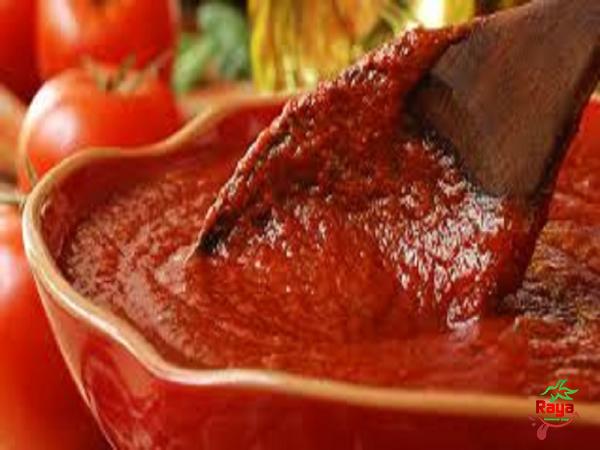 3. Similarities between Tomato Paste and Tomato Sauce: – Both tomato paste and tomato sauce are made from cooked and processed tomatoes. – They are both used to add flavor, color, and thickness to dishes. – Tomato paste and tomato sauce are versatile ingredients that can be used in a wide range of recipes. 4. Differences between Tomato Paste and Tomato Sauce: – Tomato paste is thick and concentrated, while tomato sauce has a thinner consistency. – Tomato paste is primarily used as a base or flavor enhancer, while tomato sauce is a standalone sauce used as a topping or base for various recipes. – Tomato paste is typically less seasoned than tomato sauce, allowing for more flexibility in adding desired flavors. – Tomato paste is sold in smaller quantities, while tomato sauce is available in larger jars or cans. Conclusion: Tomato paste and tomato sauce are invaluable ingredients in the kitchen, providing depth and flavor to numerous dishes. While tomato paste is a concentrated tomato product utilized as a base or flavor enhancer, tomato sauce is a versatile sauce used as a topping or base. Understanding the differences between these two tomato-based products allows for better choices in recipe creation and enhances our culinary skills.I. The Market for Tomato Paste and Tomato Sauce: The market for tomato paste and tomato sauce is vast and continually growing. These products are in high demand due to their versatility and ability to enhance the flavor and texture of various dishes. Both commercial and home cooks rely on tomato paste and tomato sauce as essential pantry staples.
3. Similarities between Tomato Paste and Tomato Sauce: – Both tomato paste and tomato sauce are made from cooked and processed tomatoes. – They are both used to add flavor, color, and thickness to dishes. – Tomato paste and tomato sauce are versatile ingredients that can be used in a wide range of recipes. 4. Differences between Tomato Paste and Tomato Sauce: – Tomato paste is thick and concentrated, while tomato sauce has a thinner consistency. – Tomato paste is primarily used as a base or flavor enhancer, while tomato sauce is a standalone sauce used as a topping or base for various recipes. – Tomato paste is typically less seasoned than tomato sauce, allowing for more flexibility in adding desired flavors. – Tomato paste is sold in smaller quantities, while tomato sauce is available in larger jars or cans. Conclusion: Tomato paste and tomato sauce are invaluable ingredients in the kitchen, providing depth and flavor to numerous dishes. While tomato paste is a concentrated tomato product utilized as a base or flavor enhancer, tomato sauce is a versatile sauce used as a topping or base. Understanding the differences between these two tomato-based products allows for better choices in recipe creation and enhances our culinary skills.I. The Market for Tomato Paste and Tomato Sauce: The market for tomato paste and tomato sauce is vast and continually growing. These products are in high demand due to their versatility and ability to enhance the flavor and texture of various dishes. Both commercial and home cooks rely on tomato paste and tomato sauce as essential pantry staples.
Specifications of tomato paste
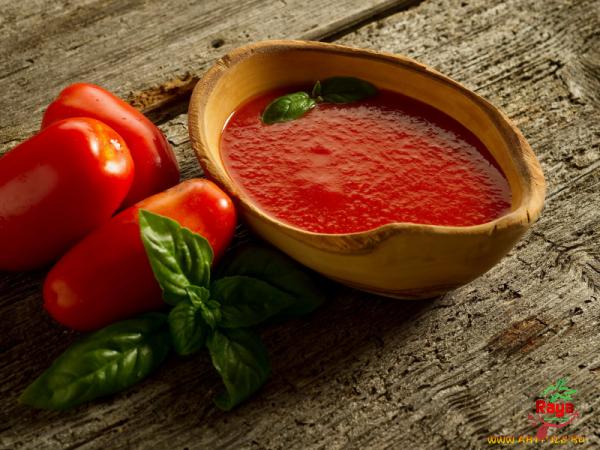 A. Global Market Size: The global market for tomato paste and tomato sauce has witnessed steady growth over the years. The rise in demand can be attributed to the increasing popularity of international cuisines, convenience foods, and the growing trend of home cooking. B. Regional Consumption Patterns: The consumption of tomato paste and tomato sauce varies across different regions. For instance, in Mediterranean countries, tomato paste is a key ingredient in traditional dishes such as pasta sauces and stews. In Asian countries, particularly in countries like India, tomato sauce is a common base for curries and gravies. C. Industry Players: The tomato paste and tomato sauce market is highly competitive, with both global and regional players competing for market share. Prominent players in this industry include companies like Nestlé, Conagra Brands, Kraft Heinz, Del Monte Foods, and Capri Sun. D. Sustainable and Organic Trends: With the increasing focus on health and sustainability, there is a growing demand for organic and sustainably sourced tomato paste and tomato sauce. Consumers are seeking products that are free from artificial flavors, preservatives, and GMOs. II. Production and Supply Chain: The production and supply chain of tomato paste and tomato sauce involve several stages and players. Understanding these processes is crucial for both manufacturers and consumers. A. Tomato Cultivation: Tomatoes used for making tomato paste and tomato sauce are generally cultivated on farms with suitable climatic conditions. The selection of high-quality tomato varieties is essential to ensure a rich flavor and desirable characteristics. B. Harvesting and Transportation: Once the tomatoes are ready for harvest, they are carefully picked and transported to processing facilities. The transportation stage is critical to prevent any damage that may affect the quality of the end product. C. Processing: At the processing facilities, the tomatoes undergo a series of steps to convert them into paste or sauce. These steps typically involve washing, sorting, crushing, cooking, and straining. For tomato paste, the cooking process is prolonged to reduce the water content and thicken the consistency. D. Packaging and Distribution: After the tomato paste or tomato sauce is prepared, it is packaged into various containers such as cans, tubes, jars, or bulk containers for commercial use. The packaged products are then distributed to retailers, wholesalers, and food service establishments for sale to consumers.
A. Global Market Size: The global market for tomato paste and tomato sauce has witnessed steady growth over the years. The rise in demand can be attributed to the increasing popularity of international cuisines, convenience foods, and the growing trend of home cooking. B. Regional Consumption Patterns: The consumption of tomato paste and tomato sauce varies across different regions. For instance, in Mediterranean countries, tomato paste is a key ingredient in traditional dishes such as pasta sauces and stews. In Asian countries, particularly in countries like India, tomato sauce is a common base for curries and gravies. C. Industry Players: The tomato paste and tomato sauce market is highly competitive, with both global and regional players competing for market share. Prominent players in this industry include companies like Nestlé, Conagra Brands, Kraft Heinz, Del Monte Foods, and Capri Sun. D. Sustainable and Organic Trends: With the increasing focus on health and sustainability, there is a growing demand for organic and sustainably sourced tomato paste and tomato sauce. Consumers are seeking products that are free from artificial flavors, preservatives, and GMOs. II. Production and Supply Chain: The production and supply chain of tomato paste and tomato sauce involve several stages and players. Understanding these processes is crucial for both manufacturers and consumers. A. Tomato Cultivation: Tomatoes used for making tomato paste and tomato sauce are generally cultivated on farms with suitable climatic conditions. The selection of high-quality tomato varieties is essential to ensure a rich flavor and desirable characteristics. B. Harvesting and Transportation: Once the tomatoes are ready for harvest, they are carefully picked and transported to processing facilities. The transportation stage is critical to prevent any damage that may affect the quality of the end product. C. Processing: At the processing facilities, the tomatoes undergo a series of steps to convert them into paste or sauce. These steps typically involve washing, sorting, crushing, cooking, and straining. For tomato paste, the cooking process is prolonged to reduce the water content and thicken the consistency. D. Packaging and Distribution: After the tomato paste or tomato sauce is prepared, it is packaged into various containers such as cans, tubes, jars, or bulk containers for commercial use. The packaged products are then distributed to retailers, wholesalers, and food service establishments for sale to consumers.
buy tomato paste
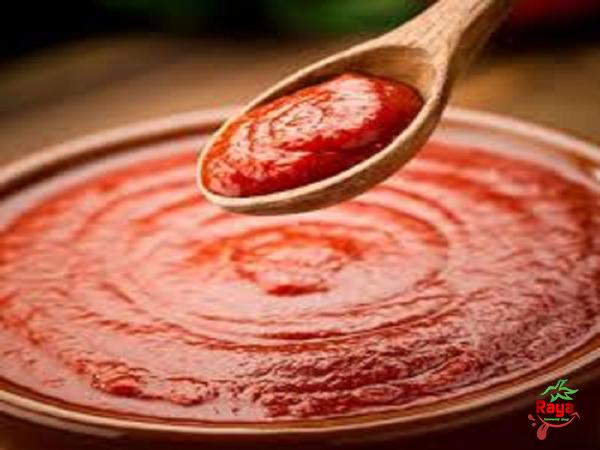 III. Utilization in the Food Industry: Tomato paste and tomato sauce serve as essential ingredients in the food industry, contributing to the development of various products. A. Food Service Sector: In the food service sector, tomato paste and tomato sauce are widely used in restaurants, hotels, and catering establishments. They are key components in the preparation of pizza, pasta dishes, soups, stews, and various sauces. B. Ready-to-eat and Convenience Foods: The demand for convenience foods is on the rise, and tomato paste and tomato sauce are commonly found in ready-to-eat meals, frozen pizzas, canned soups, and sauces. These products cater to consumers seeking quick and easy meal solutions. C. Private Label and Contract Manufacturing: Private label brands and contract manufacturers play a significant role in the tomato paste and tomato sauce industry. They work closely with retailers and food service companies to develop customized products with specific flavors and ingredient profiles. IV. Culinary Applications and Recipes: Tomato paste and tomato sauce are incredibly versatile ingredients, offering a plethora of culinary applications. Numerous recipes can be created using these products. A. Pasta Sauces and Italian Dishes: Tomato sauce is the base for classic pasta sauces like marinara, bolognese, and arrabbiata. It can also be used in lasagnas, pizzas, and meatball dishes, providing a tangy and rich flavor. B. Soups, Stews, and Curries: Tomato paste is an excellent addition to soups, stews, and curries, enhancing the depth and complexity of flavors. It adds a concentrated tomato flavor and helps thicken the consistency of the dish. C. Marinades and Dips: Both tomato paste and tomato sauce can be used to create flavorful marinades for meats, poultry, and seafood. They are also commonly used in the preparation of dips, such as salsa or tomato-based dressings. V. Health Benefits and Nutritional Value: Tomato paste and tomato sauce offer several health benefits, being rich in essential nutrients and antioxidants. A. Lycopene Content: Both tomato paste and tomato sauce are excellent sources of lycopene, a powerful antioxidant that helps protect against certain types of cancers and cardiovascular diseases. B. Vitamins and Minerals: Tomatoes are rich in vitamins A and C, which are important for maintaining immune function. They also provide essential minerals like potassium. C. Low in Calories and Fat: Tomato paste and tomato sauce are low in calories and fat, making them ideal for individuals seeking healthier food options. Conclusion: Tomato paste and tomato sauce are indispensable ingredients in the culinary world, enhancing the flavor, texture, and nutritional value of various dishes. Understanding the similarities, differences, production processes, market trends, and culinary applications of these products enables both consumers and industry players to make informed decisions. With their versatility and widespread use across continents, tomato paste and tomato sauce will continue to be essential staples in kitchens worldwide.
III. Utilization in the Food Industry: Tomato paste and tomato sauce serve as essential ingredients in the food industry, contributing to the development of various products. A. Food Service Sector: In the food service sector, tomato paste and tomato sauce are widely used in restaurants, hotels, and catering establishments. They are key components in the preparation of pizza, pasta dishes, soups, stews, and various sauces. B. Ready-to-eat and Convenience Foods: The demand for convenience foods is on the rise, and tomato paste and tomato sauce are commonly found in ready-to-eat meals, frozen pizzas, canned soups, and sauces. These products cater to consumers seeking quick and easy meal solutions. C. Private Label and Contract Manufacturing: Private label brands and contract manufacturers play a significant role in the tomato paste and tomato sauce industry. They work closely with retailers and food service companies to develop customized products with specific flavors and ingredient profiles. IV. Culinary Applications and Recipes: Tomato paste and tomato sauce are incredibly versatile ingredients, offering a plethora of culinary applications. Numerous recipes can be created using these products. A. Pasta Sauces and Italian Dishes: Tomato sauce is the base for classic pasta sauces like marinara, bolognese, and arrabbiata. It can also be used in lasagnas, pizzas, and meatball dishes, providing a tangy and rich flavor. B. Soups, Stews, and Curries: Tomato paste is an excellent addition to soups, stews, and curries, enhancing the depth and complexity of flavors. It adds a concentrated tomato flavor and helps thicken the consistency of the dish. C. Marinades and Dips: Both tomato paste and tomato sauce can be used to create flavorful marinades for meats, poultry, and seafood. They are also commonly used in the preparation of dips, such as salsa or tomato-based dressings. V. Health Benefits and Nutritional Value: Tomato paste and tomato sauce offer several health benefits, being rich in essential nutrients and antioxidants. A. Lycopene Content: Both tomato paste and tomato sauce are excellent sources of lycopene, a powerful antioxidant that helps protect against certain types of cancers and cardiovascular diseases. B. Vitamins and Minerals: Tomatoes are rich in vitamins A and C, which are important for maintaining immune function. They also provide essential minerals like potassium. C. Low in Calories and Fat: Tomato paste and tomato sauce are low in calories and fat, making them ideal for individuals seeking healthier food options. Conclusion: Tomato paste and tomato sauce are indispensable ingredients in the culinary world, enhancing the flavor, texture, and nutritional value of various dishes. Understanding the similarities, differences, production processes, market trends, and culinary applications of these products enables both consumers and industry players to make informed decisions. With their versatility and widespread use across continents, tomato paste and tomato sauce will continue to be essential staples in kitchens worldwide.

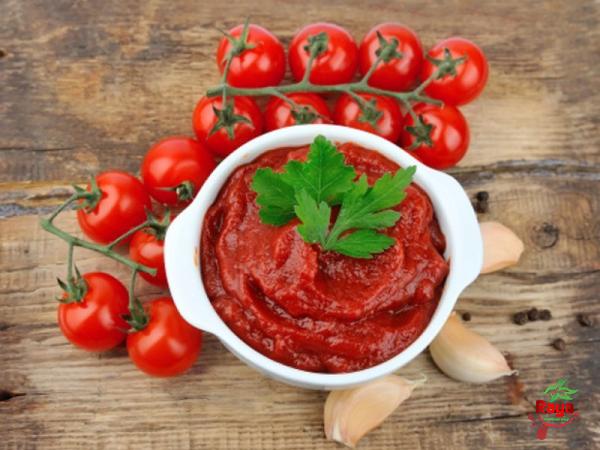
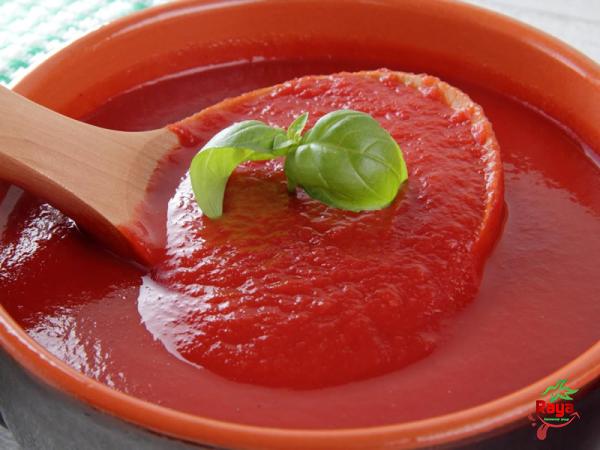


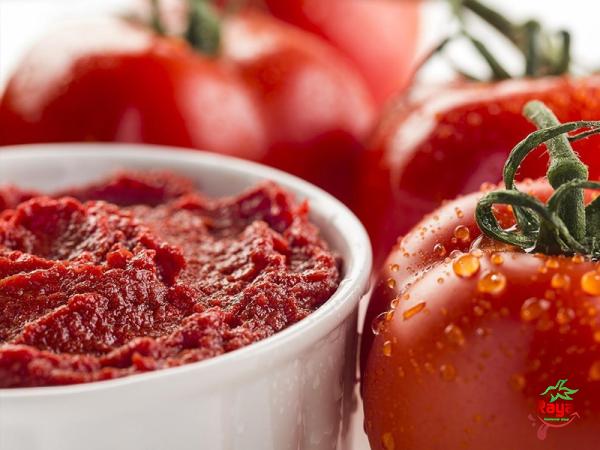
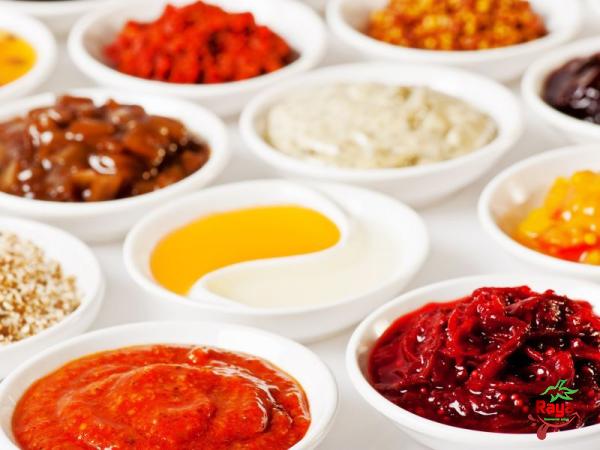
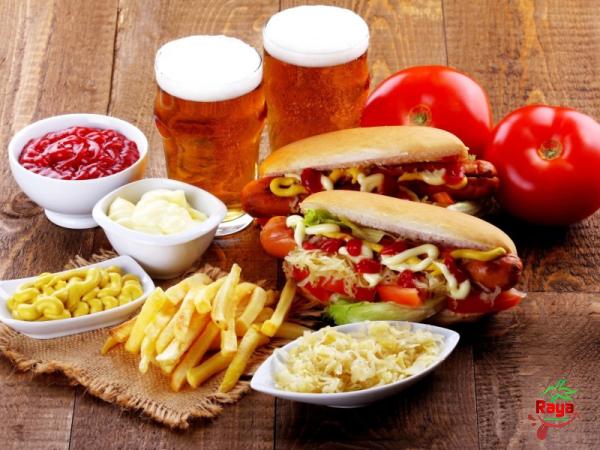

Your comment submitted.